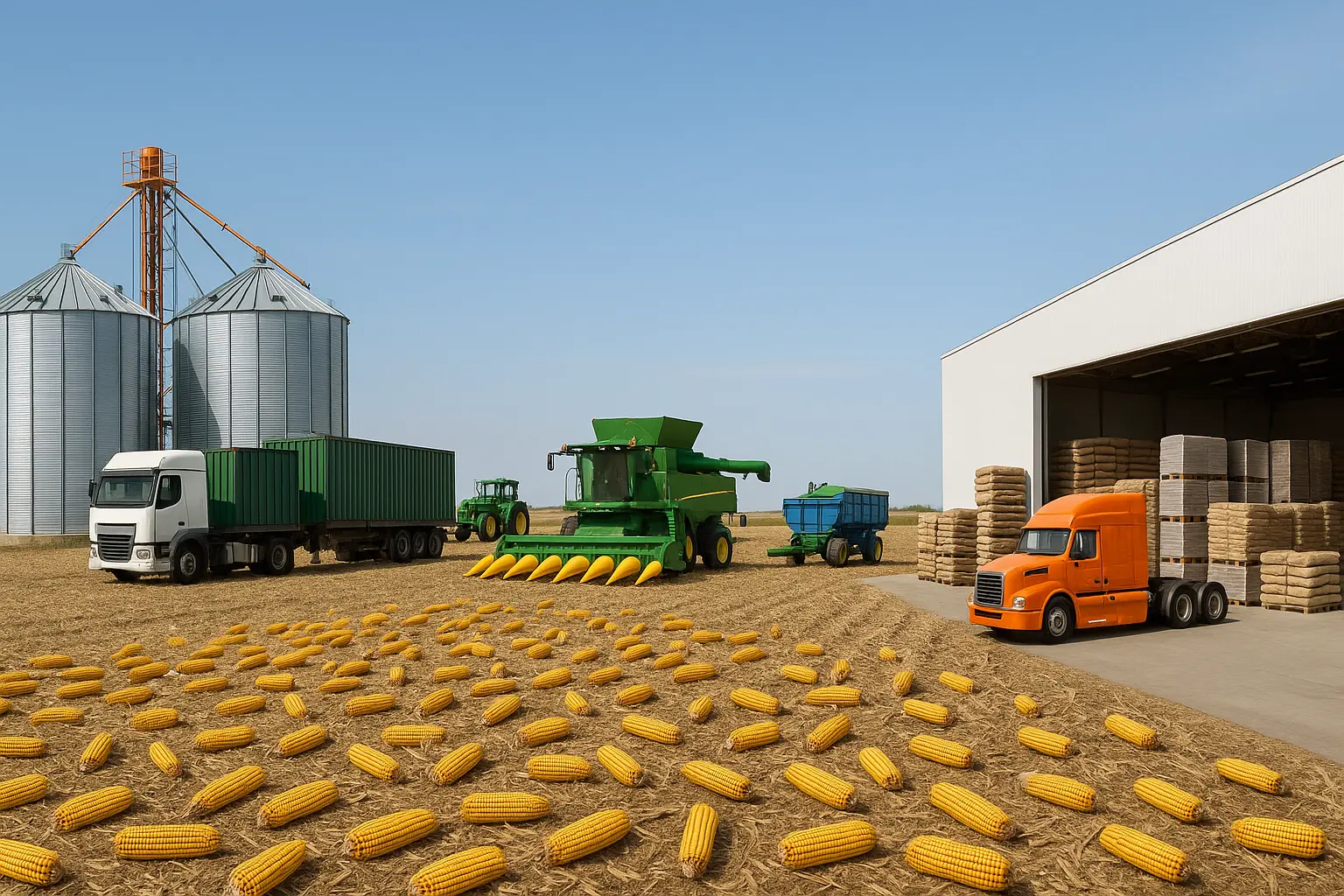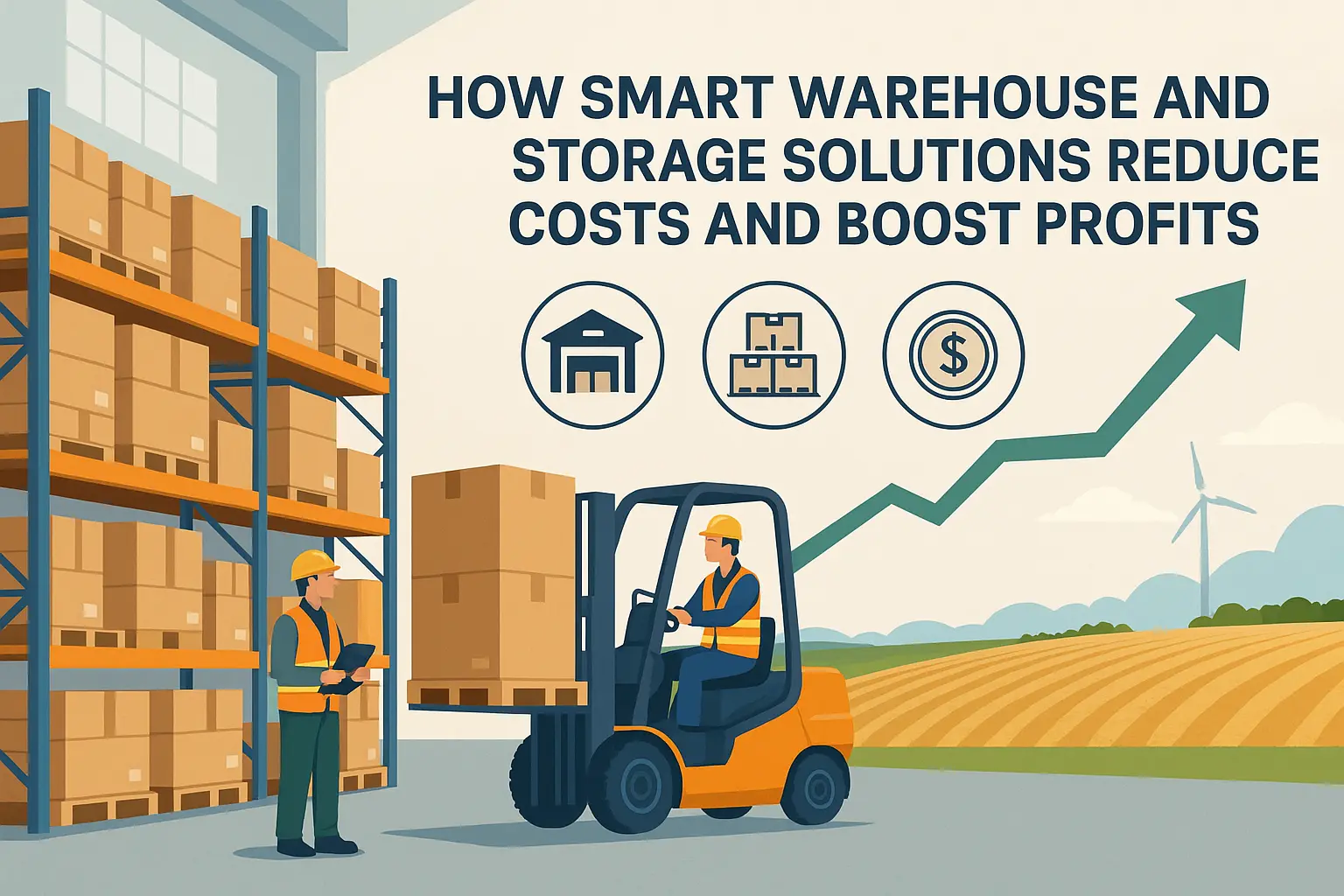In today’s dynamic and competitive economy, companies across sectors are under constant pressure to keep costs under control while finding new ways to expand their profit margins. Global supply chains are growing increasingly complex, and customer expectations around speed, accuracy, and reliability are higher than ever. Within this scenario, storage and logistics emerge as silent game-changers.
Businesses that rely on traditional warehousing approaches often struggle with high costs, inefficiencies, and poor scalability. However, with the advent of digitally enabled storage solutions, organizations now have the tools to optimize processes, improve resource utilization, and deliver greater value to customers.
For agribusinesses in India, where margins are slim and demand is highly seasonal, the importance of efficient storage solutions cannot be overstated. Proper storage is the difference between post-harvest losses and long-term profitability. Companies like StarAgri, a leading Agritech company in India, are demonstrating how advanced storage systems can turn warehouses into powerful enablers of business growth rather than cost burdens.
Smarter Approaches to Storage and Logistics
Modern storage goes far beyond piling goods into a warehouse. Instead, it integrates technology, intelligent design, and data-driven strategies to ensure that goods are stored, managed, and moved with maximum efficiency.
Some of the key functions of advanced storage services include:
- Inventory control to prevent stockouts and reduce holding costs.
- Order fulfillment systems that ensure accuracy and speed in processing.
- Space optimization techniques that make the most of every square foot.
- Workforce efficiency tools that reduce manual errors and overtime.
The integration of IoT devices, ERP platforms, and AI-based systems ensures real-time visibility, predictive analysis, and streamlined supply chain performance. For agriculture, these advancements directly impact commodity preservation. Grains, pulses, and oilseeds stored under precise conditions face significantly less spoilage, extending their shelf life and market value.
Thus, smarter storage is not just a logistical upgrade—it is a strategic investment that saves money, boosts customer satisfaction, and enables scalability.
How Smart Storage Reduces Operational Costs
Businesses often view logistics as a major cost center, but in reality, intelligent storage can dramatically cut unnecessary expenses. Here’s how:
1. Better Use of Space
Storage space is often underutilized due to poor layout planning. By employing intelligent slotting systems, businesses can maximize available capacity and reduce the need for expansion or costly external rentals. For instance, stacking agricultural produce with climate-controlled sections ensures commodities are preserved without occupying more space than necessary.
2. Improved Inventory Accuracy
Mismanaged inventory leads to two major problems: overstocking and stockouts. Both are expensive. Overstocking ties up working capital, while stockouts lead to lost sales and unsatisfied customers. Advanced tracking tools provide real-time visibility, enabling businesses to store only what is necessary and avoid costly mistakes.
3. Increased Labor Productivity
Manual handling of storage tasks is time-consuming and error-prone. With automation—such as barcode scanners, RFID systems, and AI-driven sorting—companies reduce reliance on overtime and boost efficiency. This is particularly useful in peak agricultural seasons, when speed and accuracy are critical.
4. Savings on Transport and Handling
Unplanned transportation and excessive handling add hidden costs. Smart logistics planning reduces duplicate handling, minimizes damages, and ensures goods are moved with fewer resources. For perishable crops like fruits or vegetables, this can mean the difference between profit and loss.
5. Lower Error Rates
Every incorrect order leads to additional shipping costs, rework, and sometimes loss of customers. By improving picking and packing accuracy, smart storage minimizes operational errors, saving time and money.
In short, by cutting waste, reducing inefficiencies, and optimizing resources, businesses can reinvest savings into other growth areas.
How Smarter Logistics Unlocks Higher Profits 
While cost reduction is important, the real power of advanced storage solutions lies in their ability to drive revenue growth and increase profit margins.
1. Faster and Accurate Fulfillment
Speed is the new currency in today’s market. Customers—whether retailers, processors, or end consumers—expect timely deliveries. Smart storage enables businesses to fulfill orders quickly and accurately, leading to repeat business and stronger client relationships.
2. Smarter Decisions with Data
Modern storage platforms generate data that can be analyzed for demand forecasting, procurement planning, and sales strategies. By predicting demand patterns, businesses avoid losses from unsold stock and capitalize on high-demand periods.
3. Flexibility for Growth
As businesses expand, traditional warehouses struggle to keep pace. Advanced systems are inherently scalable, making it easier to handle seasonal spikes or sudden surges in demand without proportionally increasing costs. In agriculture, this adaptability is crucial during harvest seasons.
4. Stronger Customer Loyalty
Consistency builds trust. With accurate deliveries, reduced errors, and timely shipments, businesses create loyal customers who return repeatedly. This not only boosts revenue but also reduces customer acquisition costs in the long run.
Emerging Trends in Storage and Supply Chains
The future of logistics is being shaped by three major trends that combine technology with sustainability:
- AI and Robotics: Automated robots for order picking and AI-powered predictive systems will further reduce errors and costs while increasing speed.
- Green Storage: Energy-efficient facilities, renewable energy integration, and eco-friendly materials will reduce carbon footprints while cutting utility costs.
- Cloud-Based Platforms: Affordable, cloud-driven logistics systems will empower even small and medium-sized businesses to benefit from modern storage without heavy capital investment.
In India, where agriculture contributes significantly to GDP, adopting these trends will not only improve profitability but also ensure sustainability for future generations.
Why StarAgri Stands Out in Agri-Storage Solutions
When it comes to agricultural warehousing in India, few companies have the credibility and reach of StarAgri. As one of the country’s most trusted Agritech organizations, StarAgri delivers integrated agri-tech and post-harvest solutions that create direct value for stakeholders across the agricultural supply chain.
Here’s how StarAgri is redefining the landscape:
- Advanced storage facilities across India that reduce post-harvest losses.
- Collateral management services that empower farmers with access to financing.
- Value chain solutions that improve market access and efficiency.
- Technology integration that ensures traceability and transparency.
- Farmer empowerment initiatives that help increase income and financial security.
By leveraging these solutions, StarAgri not only reduces costs for stakeholders but also ensures higher margins by preserving commodity quality, improving supply chain transparency, and building efficiency at scale.
Their pan-India footprint ensures that commodities are stored securely, inventory is optimized, and agricultural supply chains run smoothly. This makes them a reliable partner for businesses and farmers alike.
Conclusion
In today’s competitive marketplace, storage solutions are no longer just about safe-keeping goods—they are about driving growth and profitability. By optimizing space, improving inventory accuracy, reducing transport costs, and leveraging data insights, businesses can significantly reduce expenses. At the same time, faster fulfillment, scalability, and improved customer loyalty unlock new avenues for revenue.
For India’s agriculture sector—where post-harvest losses have traditionally drained profits—smart storage and warehouse management services are proving revolutionary. StarAgri, with its commitment to innovation, sustainability, and farmer empowerment, is leading this transformation through its advanced warehousing solutions.
If your goal is to reduce operational costs, strengthen profitability, and build resilience, the path lies in adopting modern storage practices. And with trusted leaders like StarAgri driving Agritech innovation, the journey towards sustainable growth is already underway.
Disclaimer
The content published on this blog is provided solely for informational and educational purposes and is not intended as professional or legal advice. While we strive to ensure the accuracy and reliability of the information presented, StarAgri make no representations or warranties of any kind, express or implied, about the completeness, accuracy, suitability, or availability with respect to the blog content or the information, products, services, or related graphics contained in the blog for any purpose. Any reliance you place on such information is therefore strictly at your own risk. Readers are encouraged to consult qualified agricultural experts, agronomists, or relevant professionals before making any decisions based on the information provided herein. StarAgri, its authors, contributors, and affiliates shall not be held liable for any loss or damage, including without limitation, indirect or consequential loss or damage, or any loss or damage whatsoever arising from reliance on information contained in this blog. Through this blog, you may be able to link to other websites that are not under the control of StarAgri. We have no control over the nature, content, and availability of those sites and inclusion of any links does not necessarily imply a recommendation or endorsement of the views expressed within them. We reserve the right to modify, update, or remove blog content at any time without prior notice.



